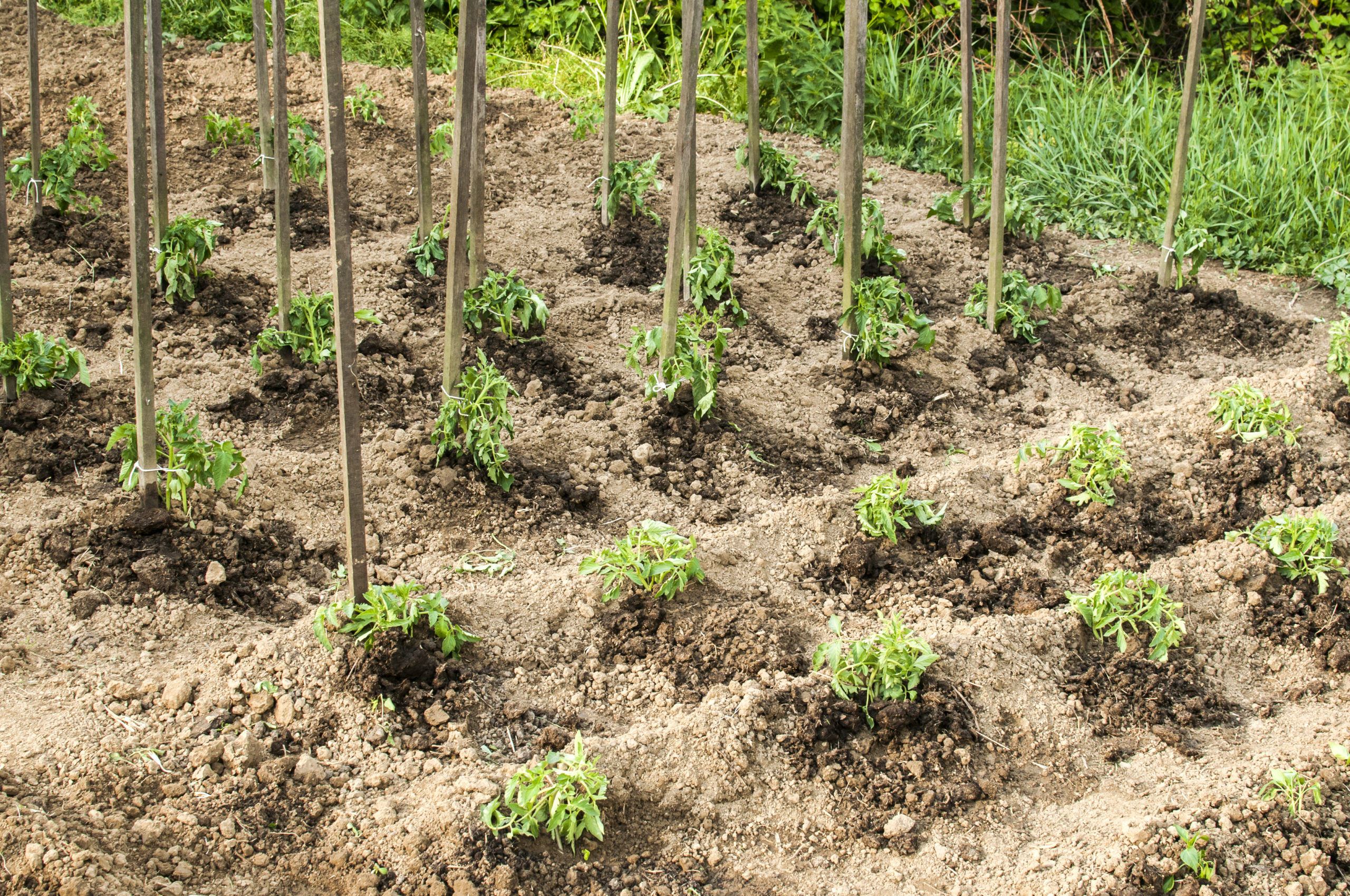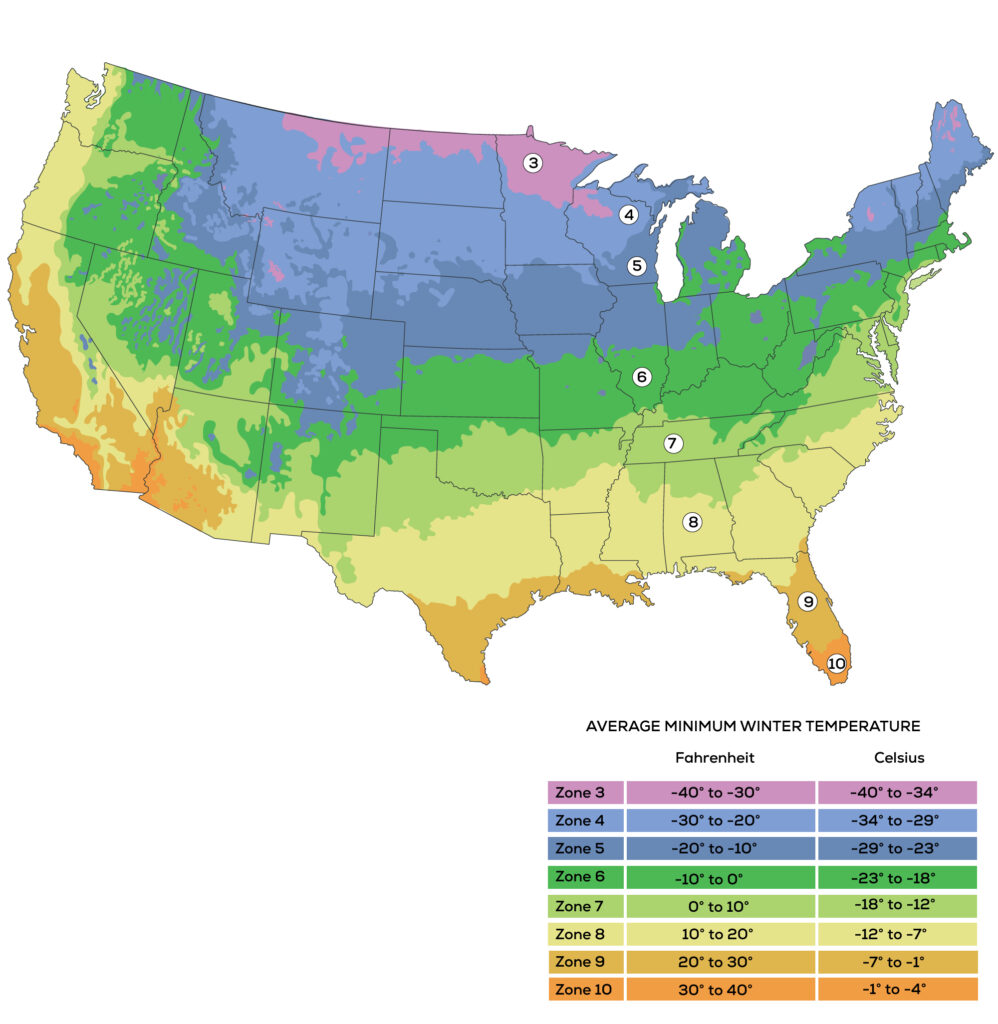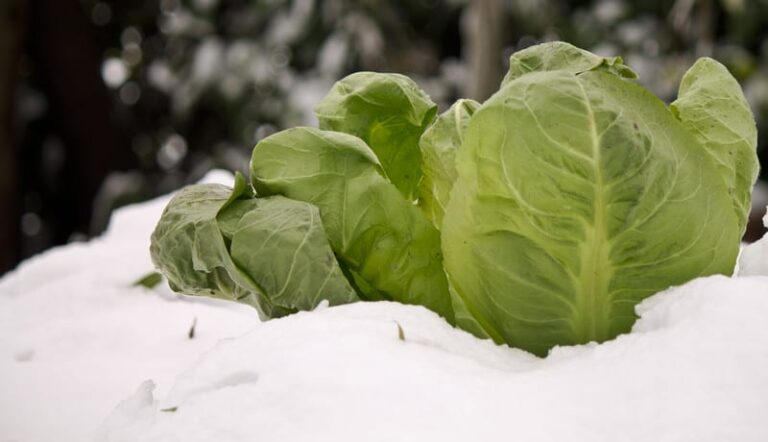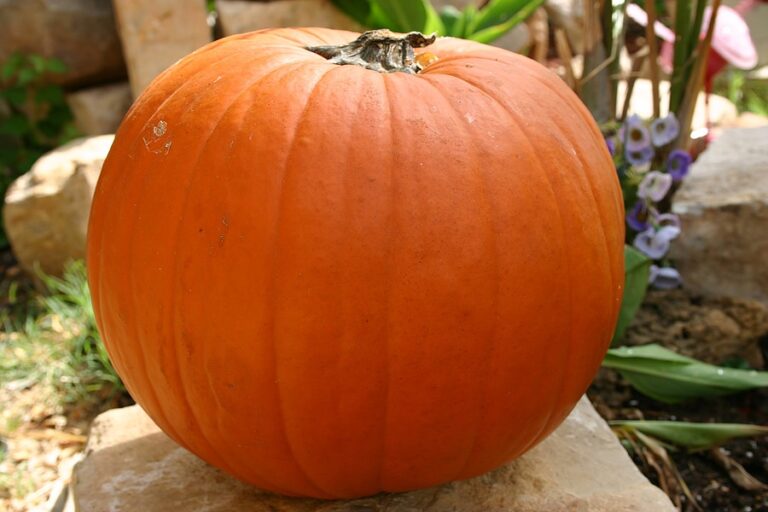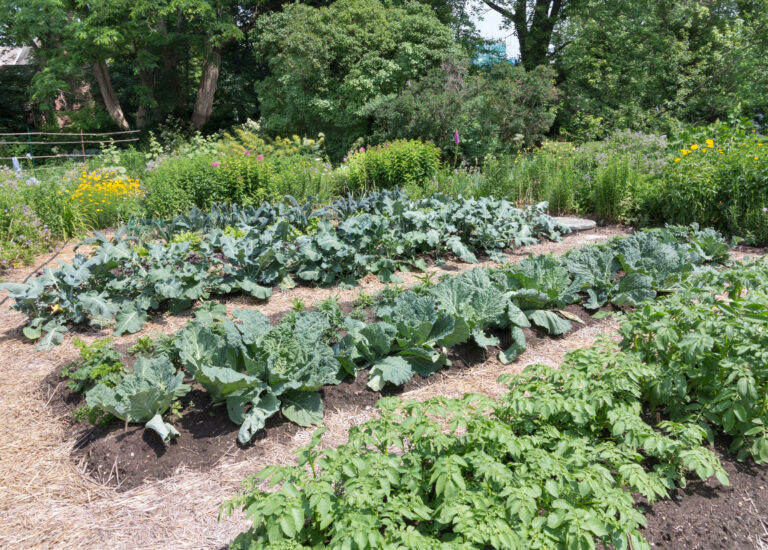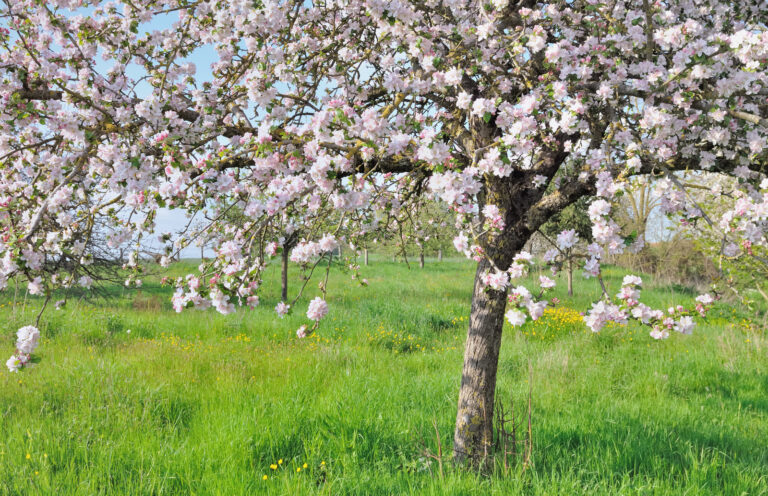May Vegetable Garden Zone-by-Zone
May is the month to get your summer vegetable garden planted and growing. Almost all warm-season crops can either be sown or transplanted into the garden by mid-May. If you live in a short growing season region (Zones 3 to 6) keep crop-protecting devices such as row covers and plastic hoop tunnels and row covers at the ready.
Be sure to harden off seedlings started indoors before transplanting them out. Make sure the soil stays just moist–not wet–until the roots of your crops are well established. Keep weeds at bay especially early in the season; they will be competing for the same nutrients and moisture your young vegetables and herbs need.
Good Products for Raised Bed Growing at Amazon:
- Galvanized Raised Bed 8×3
- Cedar Raised Bed 4×8
- Elevated Cedar Planter 4×2
- Walk-In Greenhouse Tunnel 15x7x7
- Row Cover for Freeze Protection 10×30
Zone Map for the United States
Here is a zone-by-zone to-do list for May. You’ll find planting and garden care tips for trees and shrubs, perennials, annuals, bulbs, lawn, and container gardens for your region.
Use the USDA Hardiness Zone Map below to check your zone if you are unsure.
If you are unsure when the last frost in spring happens where you live–and when the first frost in autumn comes. Go to this post: Average Last and First Frost Dates for Cities, States, and Countries. The months between the last frost in spring and the first frost in autumn is the natural growing season for your region.
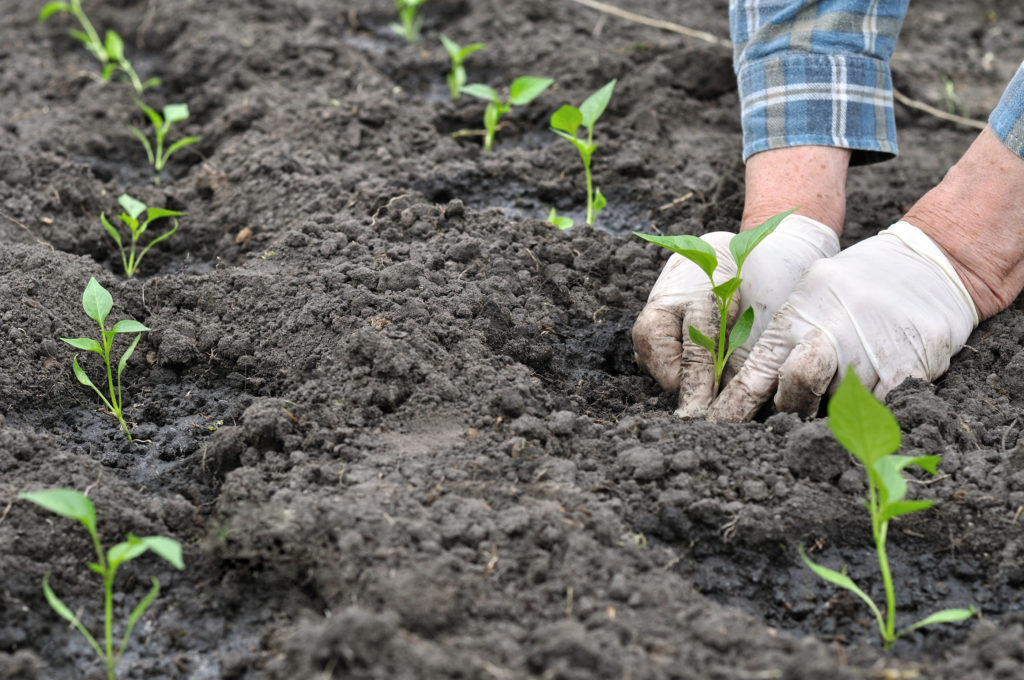
Zones 7-11: Warm Region Vegetable Garden May Checklist
If the weather has settled in your region, now is the time to direct sow warm-weather vegetable seeds. Once the last frost is past, vegetables starts can go into the garden as well. Few seeds will germinate if the soil temperature is below 45ºF (7ºC) and warm-weather crops will not thrive until the night temperatures stay consistently above 50ºF (10ºC). Follow the high and low temperatures for several days if you are unsure if the time is right to begin sowing and planting out warm-season crops. If you do get started and temperatures unexpectedly dip, use horticultural fleece or cloches to protect summer veggies from danger. You can minimize transplant shock if you hold off putting melons and summer and winter squash seedlings in the garden until 10 days after the date of the last expected frost. Peppers and eggplants can be transplanted into the garden two to three weeks after the last frost. Herb starts like dill, oregano, sweet marjoram, cilantro, rosemary, sage, and thyme can be transplanted into the garden this month. Make sure the weather is settled warm before you plant out basil and lemongrass.
If you live in USDA Plant Hardiness Zones 7-11, here is a vegetable gardening checklist for May: (In the United States, USDA Zones 10 and 9 include the Gulf Coast and parts of the South Atlantic states, the Pacific Southwest—mainly Southern California, and parts of the Desert states. Temperature lows in the coldest of these regions can drop as low as 20°F (-7°C). In Europe, parts of Spain, Italy, and France and regions of countries bordering the Mediterranean Sea are in Zones 10 and 9. USDA Zone 8 includes the Mid-South, Pacific Norwest states, and parts of Northern California. Zone 7 includes parts of the Northeast, the Mid-Atlantic region, and eastern sections of the Northwest. Temperature lows in the coldest of these regions can drop as low as 0°F (-18°C). Much of the United Kingdom, France, and parts of Spain are in Zone 8. The western regions of Germany are in Zone 7.)
Greenhouse and cold frame Zones 7-11:
- Sow successions of tender vegetables such as tomatoes, peppers, cucumbers, and runner beans to plant out later.
- Plant greenhouse tomato plants in large pots, or plant them in grow bags.
- Water and feed tomatoes, cucumbers, and peppers, never letting the soil dry out. Remove side shoots from tomatoes.
- Attach slings or nets to greenhouse melons as they swell.
- Introduce biological controls to keep down pests such as greenhouse whiteflies and spider mites.
Vegetables in the garden Zones 7-11:
- Start sowing vegetables without protection if the soil and nighttime temperatures have warmed.
- Thin beets, carrots, lettuce, radishes, spinach, and other half-hardy and hardy seedlings were planted late last month. As crops are harvested, plant successions of early or start introducing summer crops.
- Early in the month, prepare outdoor sites for cucumbers, squashes, and tomatoes. Erect supports for runner beans, and place stakes, poles, and trellises in place for tall and climbing crops.
- Stake tomatoes and tie them gently to the stakes.
- Remove cloches from broad beans, carrots, and peas.
- Mid-month sowing: sow seeds of beans, lima beans, corn, okra, squash, cucumber, cantaloupe, Chinese cabbage, and other tender vegetables and herbs after temperatures have reached the 70sF.
- Sow cucumbers in mounds enriched with plenty of well-rotted manure and compost.
- Set out transplants after mid-month: tomato, eggplant, pepper, and sweet potato.
- Set out sweet potato slips on a cloudy day. Form a little mound of soil over young potato shoots to protect them from frost.
- Pinch out the tips on broad beans to encourage a good pod set and to deter an attack from aphids.
- Make further sowings of salad crops and summer spinach.
- Stop watering onions, garlic, and shallots when the foliage begins to turn yellow.

Harvest early crops in Zones 7-11:
- Start picking broad beans when the pods are finger thick.
- Continue to cut asparagus. As the asparagus harvest ends, cut back female plants with berries.
- When peas stop producing, cut vines to the ground (do not pull allowing their roots to fix nitrogen in the soil). Replace early cool-weather crops with summer crops.
Succession plantings in Zones 7-11:
- Make succession sowings of early crops: beetroot, carrots, lettuces, and turnips. Make successive sowing of lettuce, salad crops, and summer spinach, turnips, runner beans, green beans, endive, radishes, and kohlrabi.
Late month sowing and transplants in Zones 7-11:
- Sow sweet corn outdoors in mild areas when further frost is unlikely. Most vegetables can be sown now, so check the packets.
- Sow French and runner beans, pole beans, long-rooted beets, sea kale, salsify, and sweet corn.
- Plant out late-summer cauliflowers and in the north Brussels sprouts. Plant vegetable seedlings such as cabbages, cauliflowers, celery, sweet corn, tomatoes, and marrows. Plant outdoor tomatoes, and tie them gently, but firmly, to stakes to secure them.
Herbs in Zones 7-11:
- Plant or pot up basil seedlings.
- Take cuttings of pot marjoram, rosemary, sage, and thyme.
- Divide and transplant perennial herbs.
- Divide any straggly mint and thyme plants.
- Plant or pot up basil seedlings.
Pests in Zones 7-11:
- Watch for aphids on broad beans and root flies on cabbages, carrots, and onions. Keep after weeds.
Feeding and watering Zones 7-11:
- Give a side dressing of compost tea to half-grown plants.
- Keep all plants watered and well-mulched.
Fruit trees in Zones 7-11:
- Feed summer-fruiting plants with potassium sulfate to promote good flowering and fruit. Control weeds around bush and cane fruit.
- Thin the fruit on apples, peaches, nectarines pears, and plums when they reach marble-size. Thin heavy-cropping nectarines and peaches when the fruit is ½ in (1-1.5 cm) in diameter.
- Water new plantings deeply if the weather is dry. Water plentifully when the fruit is swelling.
- Hang codling moth traps on apple trees.
- Spray against apple scab, mildew, and aphids.
- Prune wood damaged by fire blight.
- Remove any shoots on well-trained fruits that are growing directly toward or away from the wall.
- Remove the blossoms from newly planted fruit trees to direct the plant’s energy into the production of strong new wood.
Berries in Zones 7-11:
- Plant new strawberries and put cloches over strawberries if you want an early corp. Harvest strawberries as they ripen. Protect strawberry fruits with straw or black plastic sheeting.
- Keep new canes of blackberries and loganberries separate from the current year’s fruiting canes. Tie new canes of blackberries and hybrid berries to a system of support wires, allowing a maximum of eight canes per plant.
- Remove weak shoots from brambles. Thin our raspberry canes. Spray raspberries against raspberry beetles. Apply the first spray as soon as the first fruit turns pink.
- Summer-prune gooseberries by cutting back side shoots to five leaves.
- Feed blackberry and hybrid berry plants with ammonium sulfate or other high-nitrogen fertilizer. Cover berries with netting to protect them from birds.
Citrus in Zones 7-11:
- Plant citrus and tropical fruit this month. Feed citrus fruit with sulfate of ammonia; feed established trees with iron sulfate. Water citrus deeply in dry weather.
Containers in Zones 7-11:
- Plant summer container plants when the danger of frost is past.
- Feed new transplants with liquid fertilizer and water as needed.

Zones 3-6: Cool Region Vegetable Garden May Checklist:
In cool- and cold-winter regions, the danger of freezing weather and frost continues through May in USDA Plant Hardiness Zones 6, 5, 4, and 3. Here is a checklist of things to do in the vegetable garden in cool and cold regions during April in the Northern Hemisphere: (USDA Zones 6, 5, 4, and 3 are the most northern and coldest winter regions of the United States the northern parts of the Rocky Mountains, northern Plains, and the Midwest States, and the northern regions of the Northeast and into Canada. Temperature lows in the coldest of these regions can drop as low as -40°F (-40°C). Eastern Europe is largely in Zone 6 and Zone 5.) The weather in cool northern regions can remain unsettled even in May.
Remember that both the soil and air temperatures are important when planting the kitchen garden. Few seeds will germinate if the soil temperature is below 45ºF (7ºC), and warm-weather crops are not going to thrive until the night temperatures consistently stay above 50ºF. By the end of the month–or two to three weeks after your last frost, your kitchen garden will be able to welcome cucumbers, bush and pole beans, and tomatoes. In the meantime, you can get these crops going in a greenhouse or cold frame or in the kitchen window. If you get the seedlings growing now, you’ll enjoy an earlier harvest next summer. Strawberries can be planted now. June-bearing-type strawberries are vigorous and spread runners rapidly and should be producing in June. Everbearing-type strawberries will fruit in June and again later in the fall. If you are looking for the easiest to grow, try Alpine strawberries. Peas. Cool-weather crops such as peas should be ready for harvest later this month or in June before the weather warms. Keep your eye on cauliflower and Brussels sprouts to get them out of the garden at their peak and before they bolt in warm weather.
Greenhouse and cold frame in Zones 3-6:
- Open the greenhouse and cold frame for warm rain and sun; close them if the temperature drops to near freezing.
- Early in the month, sow under cover half-hardy annual seeds: tomato, eggplant, pepper, and runner beans. Plant greenhouse tomato plants and cucumbers in large pots or grow bags.
- Harden off vegetable starts in the cold frame for 10 days before setting them out. By the middle of the month, you can harden off tomato plants and ready them for setting out late in the month.
- Harvest asparagus and other early crops from the cold frame.
- Introduce biological controls to keep down pests such as greenhouse whiteflies and spider mites.
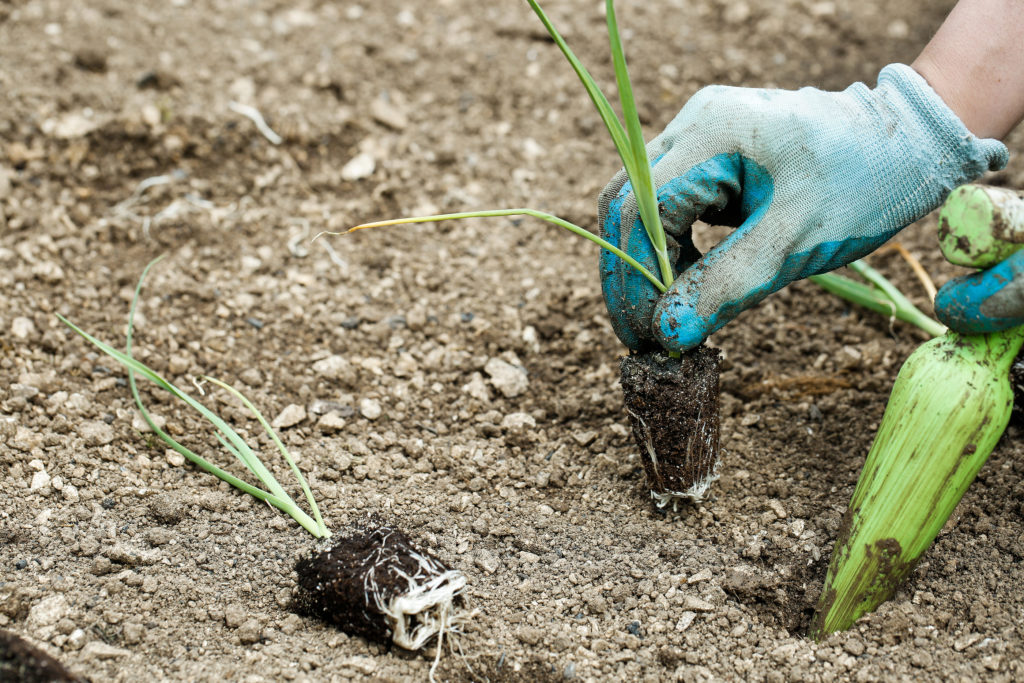
Vegetables early in the month Zones 3-6:
- As soon as the ground can be worked, add soil amendments, humus, and manure to the planting beds if these were not added in the fall. Prepare beds for planting and sowing.
- Warm up the soil in cool regions with cloches or black plastic.
- When the danger of heavy frost is past, sow or plant out cool-weather crops; harden off young plants from winter sowings of broccoli, cabbage, cauliflower, leeks, onions, lettuce, peas, and broad beans before planting out.
- Start sowing vegetables without protection if you live in mild regions. Many seeds can be sown from early spring onwards. Check seed packets as some varieties are more suitable than others for early sowing.
- Direct seed broad beans, broccoli, Brussels sprouts, cabbage, carrots, cauliflower, kohlrabi, leeks, lettuce, onions, parsnips, peas, radishes, and spinach.
- Plant asparagus, rhubarb, and celery. Dig well-rotted manure into celery trenches.
- Prepare runner-bean trenches by digging in compost or well-rotted manure.
- Plant early potatoes and onion sets.
- Use horticultural fleece or cloches for early crops.
- Thin out overcrowded vegetable seedlings sown earlier; thin beets, carrots, lettuce, radishes, and spinach.
- Mulch after the soil has warmed and plants are several inches high.
- Put supports in place for peas.
- Turn the compost pile.
- Protect vegetable starts from drying winds and keep them well watered.
- Shade transplants from direct sun for a week or until re-established outdoors.
- Weed and water as needed.
- Watch for insects and signs of disease.
Succession planting cool-weather crops in Zones 3-6:
- Make second sowing of early peas and other crops as the first harvest comes in.
- Feed lettuce and other early crops with compost.
Vegetable planting after mid-month in Zones 3-6:
- Plant warm-weather crops and tender herbs when the danger of frost is past and the soil has warmed up and the weather settled. Sow seeds of beans, corn, okra, squash, cucumber, and cantaloupe–all tender vegetables–when the weather has warmed into the 70s.
- Set out plants of tomato, eggplant, pepper, and sweet potato.
Fruits and berries in Zones 3-6:
- Plant fruit trees and brambles when the soil is workable. Paint white or wrap trunks of young trees to prevent sunscald.
- Water new plantings deeply if the weather is dry.
- Feed summer-fruiting plants with potassium sulfate to promote good flowering and fruit.
- Plant new strawberries, and place cloches over strawberries if you want an early cop. Be sure to cover strawberries if a late frost is possible.
- Plant currant bushes and raspberry canes, and water them thoroughly. Cut the canes down to 12 inches above the ground.
- Thin brambles (blackberries, raspberries, loganberries); prune away weak shoots. Prune back the stems of newly planted and two-year-old gooseberries by about one-half. Spray gooseberries and black currants for gooseberry mildew.
- Fertilize or top-dress with compost berries and grapes if not done last month. Feed blackberry and hybrid berry plants with ammonium sulfate. Control weeds around the bush and cane fruit.
- If fruit trees are still dormant apply a dormant spray to apples, pears, and plums.
- Thin the fruit on apples, pears, and plums when marble-size. Thin heavy-cropping nectarines and peaches when the fruit is ½ inch (1-1.5 cm) in diameter.
- Replace mulches removed last month.
- Prune suckers and water sprouts from trees.
- Watch for pests and signs of disease. Trap larvae on trunks of trees and destroy them.
Containers in Zones 3-6:
- When frost danger is past, move containers outdoors again.
- Plant cool-weather and later warm-weather vegetables in containers when the danger of frost is past. Feed new plants with liquid fertilizer.
Garden Planning Books at Amazon:

